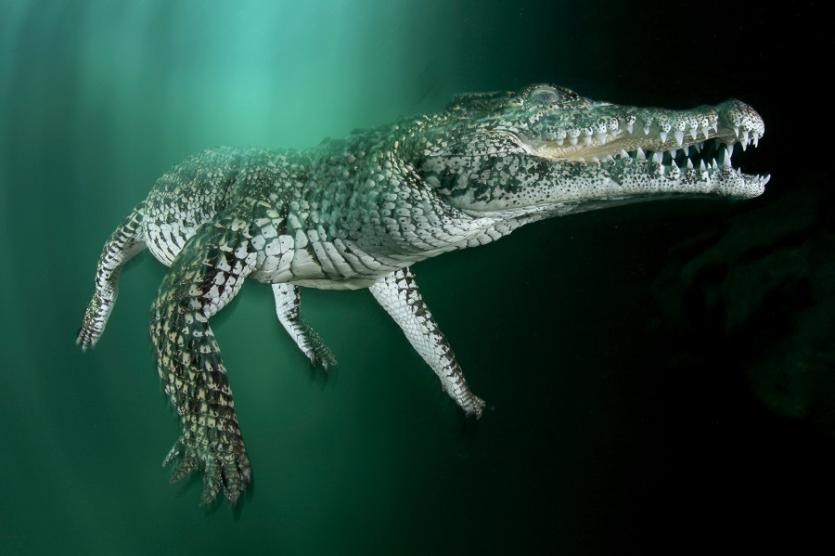Endemic Cuban Crocodile Isla de la Juventud, Cuba. Photo:Getty Images
The Endangered World We Don’t Consider
By Patryk Krych | The World Daily MAY 11th 2020
Animals of all kinds have faced endangerment, and even extinction. Oftentimes, this is a cause of human intervention – which can go both ways towards destroying an environment and preserving it. But according to the International Union for Conservation of Nature (IUCN) there are still at least 41,000 species that remain engendered, and aren’t anywhere closer to recovery since their initial census drops.
The white-tailed eagles, once common residents of the United Kingdom, had been driven to extinction from the country as a cause of hunting, and widespread destruction of their preferred habitats. The last known breeding pair were thought to have died sometime in 1780, and the last one spotted on the island had been in Scotland, in 1916. In a recent discovery, however, it’s been found that the species has begun to return to the UK, after the trial of a reintroduction programme by Roy Dennis Wildlife Foundation, and Forestry England had been led in Scotland, leading to 130 healthy breeding pairs.
Not all species are as lucky as the white-tailed eagles. In a major report published in late 2018 from the World Wide Fund for Nature (WWF) which comprised a study involving 59 scientists, it was estimated that humanity had wiped 60% of mammals, reptiles, birds and fish species since the year 1970.
“We are sleepwalking towards the edge of a cliff” said the Executive Director of Science and Conservation at the WWF, Mike Barrett. “If there was a 60% decline in the human population, that would be equivalent to emptying North America, South America, Africa, Europe, China and Oceania. That is the scale of what we have done.”
Many species have come close to extinction before, and made a stellar recovery. The white rhino for instance, had numbers as low as 100 around 1895, and had recently had their numbers recorded to be at 18,067. Extreme poaching and game hunting was the original purpose for their scrape with extinction, and even now, after a hundred years, their numbers are still too low not to earn them an endangered status. It is high profile species like this one, and the white-tailed eagle that tend to dominate the major public attention, invoking much needed funding to keep their numbers from receding. However. What about the other 41,000 species on the UICN red list that still struggle to acquire public funding?
Visually unappealing or just plain frightening species, such as the Titicaca water frog (nicknamed the scrotum frog), blobfish, Madagascar Boa, Cuban crocodile and Emperor scorpions may find themselves with very little public support for the perseverance when compared with leopards, pandas, elephants and rhinos. All need support in a world where their habitats are changing too quickly for them to adapt, yet not all get the same attention.
“What we decide to save really is very arbitrary,” The Nature Conservatory’s M. Sanjayan told National Geographic. “It’s much more often done for emotional or psychological or national reasons.”
In a study centred around exploring the influence of aesthetic appreciation towards species in the communities around Southern Kenya’s Amboseli National Park, authors wrote about how ‘environmental organizations in industrialized countries have long harnessed the visual and symbolic power of charismatic, “cute” and otherwise visually attractive animals in campaigns garnering public support for conservation causes… more recently, understanding the role that human aesthetic appreciation of animal species plays in conservation has become a prominent concern in conservation science.’
Argument may be posed from conservationists, who may put forth that more than just a ‘few’ strictly aesthetically pleasing species are ever put in the spotlight. The vitality of a species is often another factor that demands attention from the public eye. The conservational mindset is centred more about saving as many species as possible. However, what the majority of the public casts its eyes to cannot be denied, or ignored.
Amphibians and reptiles are among the subset of endangered animals that garner the least public attention. There are, however, still organisations that fight for their preservation. The Amphibian and Reptile Conservation Trust is one such organisation. Their current campaign, called ‘Saving Scotland’s Snakes’ is worth paying some attention to, as well as much of their other efforts to help save the species that aren’t quite as visually or emotionally appealing.
By Patryk Krych | © The World Daily 2020






